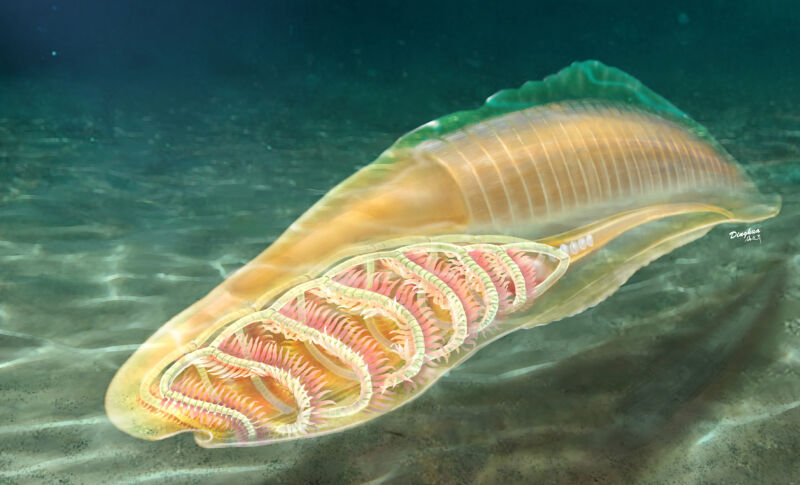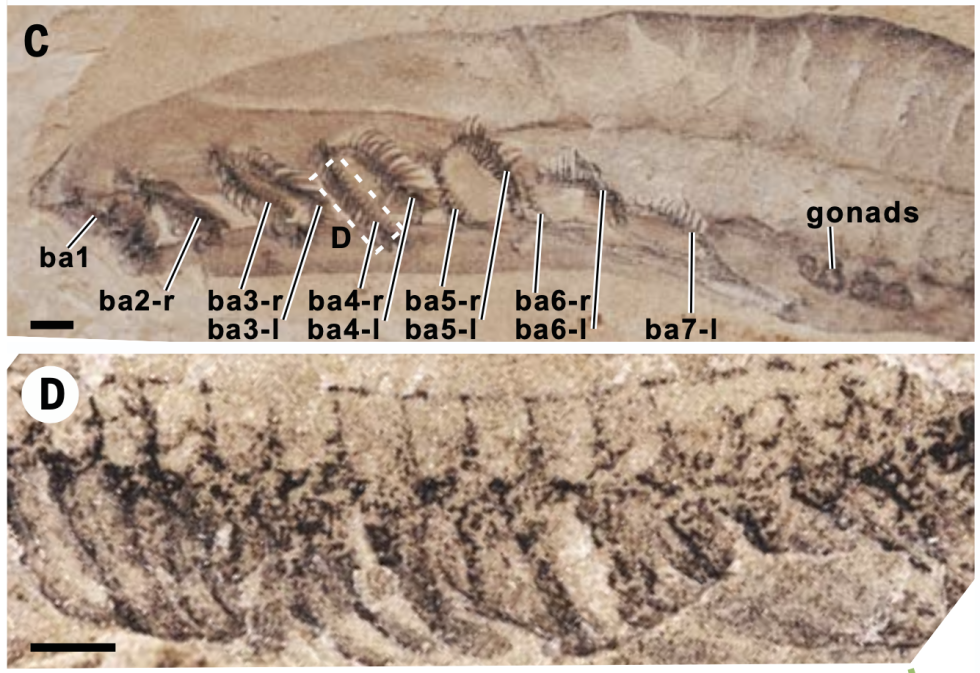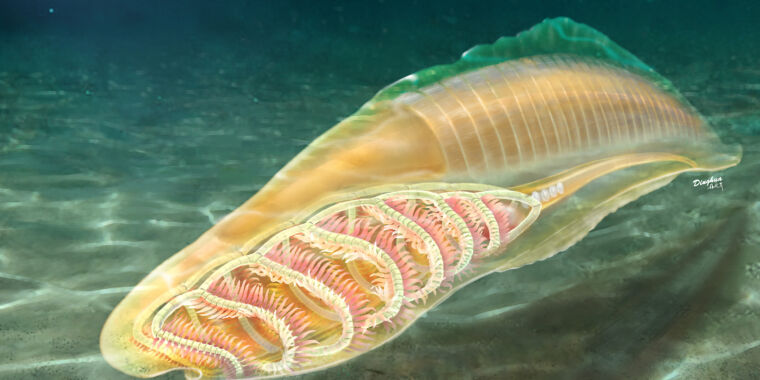
Because we’re a member of the group, it’s easy to see vertebrates as the pinnacle of evolution, a group capable of producing bats, birds, and giant whales in addition to ourselves. But when they first evolved, vertebrates were anything but a sure thing. They branched off from a group that lived in the mud and didn’t need to tell its top from its bottom or its left from its right, and so ended up losing an organized nerve cord. Our closest non-vertebrate relatives re-established a nerve cord (on the wrong side of the body, naturally) but couldn’t be bothered with niceties like a skeleton.
How exactly vertebrates came out of this hasn’t been clear, and the probable lack of a skeleton in our immediate ancestors has helped ensure that we don’t have a lot of fossils to help clarify matters.
But in Thursday’s issue of Science, researchers have re-evaluated some enigmatic fossils that date back to the Cambrian period and settled several arguments about exactly what features the yunnanozoans had. The answers include cartilaginous structures that supported gills and a possible ancestor to what became our lower jaw. In the process, they show that yunnanozoans are likely the earliest branch of the vertebrate tree.
Yunnanowhatans?
You can get a sense of what a yunnanozoan looks like from the image above. The soft tissue down its flanks was divided into segments, a feature in both our closest living non-vertebrate relatives (the amphioxus or lancelet) and is present in vertebrate embryos, but generally gets lost as they proceed through development into adults. Near the animal’s head—and it does have a clear head and mouth—there’s also an array of arched structures that look a lot like the similarly located gill arches found near the head of modern fish.
If that interpretation is correct, then that would mean yunnanozoans look a lot like an amphioxus, but have a feature that’s otherwise found only in modern vertebrates. This would mean that it preserves features critical to understanding vertebrates’ origin.
But the “if” starting from the previous paragraph is a big one. Many people in the field disagreed with this interpretation and placed yunnanozoans elsewhere. Or rather several elsewheres, depending on who exactly was arguing. Some put them in the same group as the amphioxus. Others backed them further away from vertebrates and placed them in with the group of mud-dwellers that don’t have two of the body axes found in vertebrates. Still, others suggested that they were ancestral to a huge group of organisms that include things like sea urchins.
A small team from China has now attempted to settle these arguments. It does so in part by imaging more than 100 new fossils of the species. But a big part is that they used some of the most sophisticated imaging techniques available. That included three-dimensional X-ray imaging, electron microscopy, and a technique that bombards microscopic regions of the sample with electrons, then uses the light that’s emitted to determine what elements are present.

Tian et. al.
I’m showing one of the images from the paper below to give a sense of the detail these imaging techniques provide.








